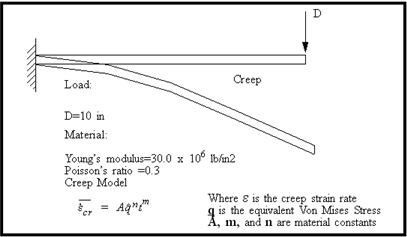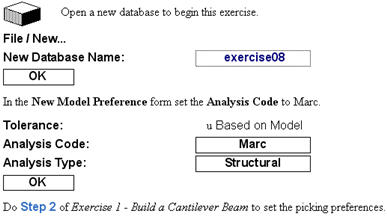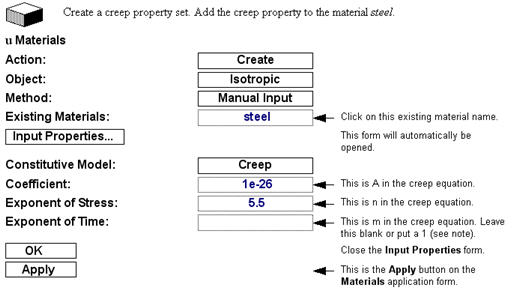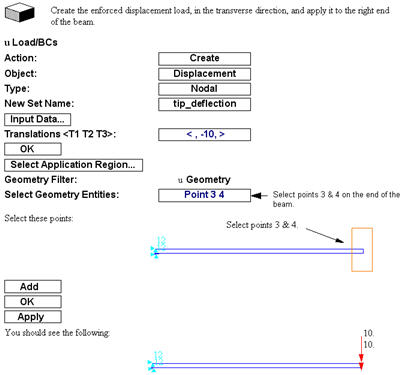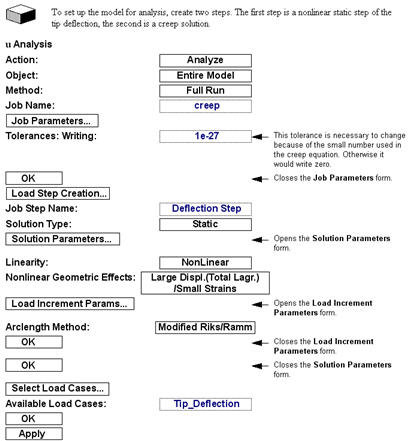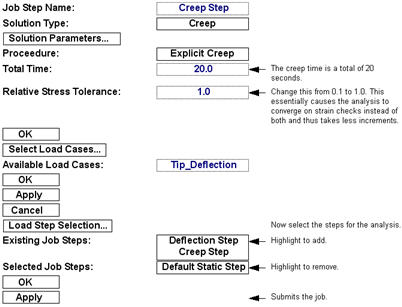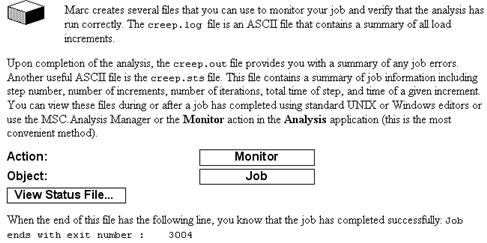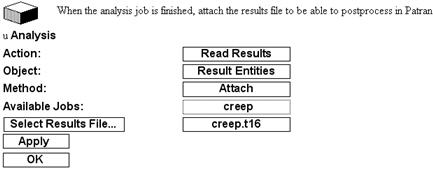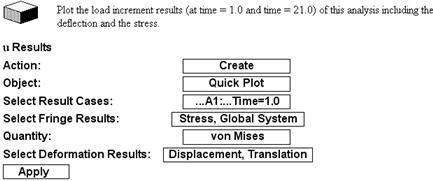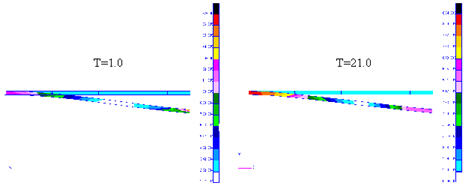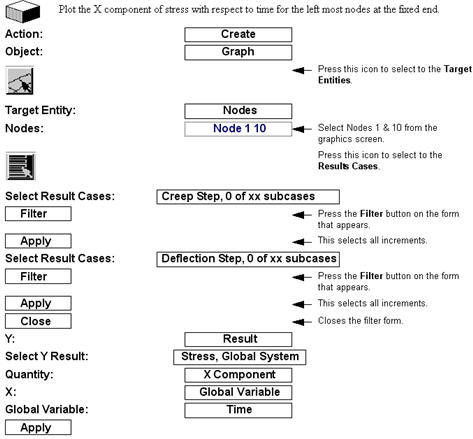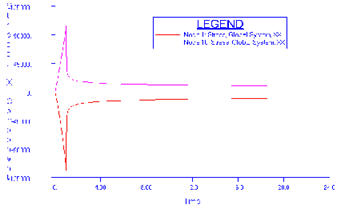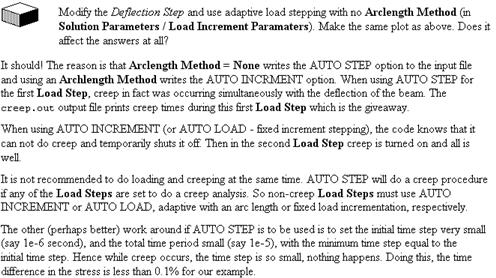XXXXXXXXXXXXXXXXXXXXXXXXXXXXXXXXXXXXXXXXXXXXXXXXXXXXXXXXXXXXXXXXXXXXXXXXXXXXXXXXXXXXXXXXXXXXXXXXXXXXXXXXXXXXXXXXXXXXXXXXXXXXXXXXXXXXXXXXXXXXXXXXXXXXXXXX''"> Exercise 8 - Creep Analysis
In this exercise, the loading history consists of two steps. In the first step, you will extend the cantilever beam non-linearly under an enforced displacement. In the second step, you will change the analysis to a creep analysis. In this step, you will allow the cantilever beam to creep for 20 seconds. The second step will cause the stress in the beam to “relax.”
Step 1: Do Exercise 1 - Build a Cantilever Beam
Step 2: Open a New Database
Step 3: Import the Old Database
Step 4: Post Only the Beam
Step 5: Create a Creep Property
Note: | The exponent of time could have been input as 1.0. The reason: namely one is entering . Now we really want epsilon dot . So the program takes the derivative and one gets epsilon dot = A * n * t(n-1). So if n=0.0, one has an identically zero strain rate, hence no relaxation. Thus n must be entered as 1.0 or left blank. |
Step 6: Create a New Load Case
Step 7: Create the Enforced Displacement
Step 8: Create Analysis Load Steps and Submit the Job
Create the second step, start by changing the Job Step Name.
Step 9: Monitor the Analysis
Step 10: Read the Results
Step 11: Postprocess the Results
Repeat this step for the time increment at t=21 seconds. Note the relaxation of the stress. The following plots should appear:
Step 12: Plot the X Component of Stress with Time
The following graph should appear. The initial loading from time T=0 to time T=1.0 represents the nonlinear static ramp of the load. At times greater than 1.0, the curve represents the creep loading which represents the stress relaxation.
Step 13: Additional Challenge
Step 14: Closing/Quitting Patran
